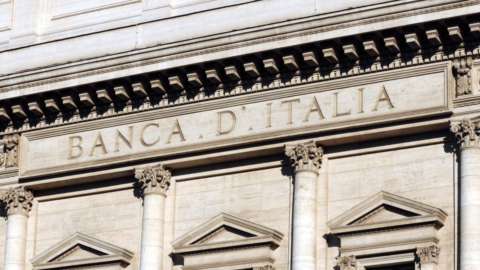The war in Ukraine and the energy crisis continue to slow down growth in Italy and throughout Europe. Not so much for this year – indeed the estimates of Italian GDP they are seen to rise to 3,8% against the 2,9% expected – as much as for next year: reduced to 0,3% against 0,9%. While a growth of 2024% is estimated for 1,1. while theinflation should reach its peak this year (+8,7%), in 2023 drop to 6,6% and in 2024 to 2,3%. They are the main fall economic forecasts of the EU Commission.
Forecasts more or less in line with theNadef update. The current government indicates a trend with current legislation equal to 3,7% in 2022, 0,3% in 2023 and 1,8% in 2024.
EU Commission: Italy's GDP growth estimates halved
La EU Commission has reduced the growth estimates Deficit/GDP of Italy this year at 5,1%, in 2023 it will settle at 3,6% and in 2024 at 4,2%. In the spring he estimated 5,5% this year and 4,3% next year. The update of the Nadef forecasts a Deficit/GDP trend of 5,1% in 2022, 3,4% in 2023 and 3,6% in 2024 (barring further budgetary measures that could be adopted); the programmatic target is 5,6%, 4,5% and 3,7% respectively.
For the EU the Debt/GDP this year it will be 144,6%, in 2023 it will be 143,6%, in 2024 it will be 142,6%. In spring estimated this year 147,9%, 2023 146,8%. The data of the new Government indicate a trend for 2022 at 145,2%, 2023 at 143,3%, 2024 at 141,4%. The programmatic objective envisages 145,7%, 144,6% and 142,3% respectively.
The European Commission also stipulates that the unemployment rate drop to 8,3% this year, but to rise again to 8,7% in 2023 and then moderate to 8,5% in 2024.
EU, Brussels cuts GDP estimates for 2023 and sees inflation rising
The EU Commission reviews the I raise the estimates for 2022 and cuts those for 2023 due to the effects of the war in Ukraine on global demand and higher inflation.
In 'Eurozone the GDP growth rate in 2022 is estimated at +3,2% this year (against the +2,6% estimated in July), to slow down to +0,3% in 2023 (a +1,4% was estimated % in summer). In 2024 alone, GDP growth in the euro area is expected by 1,5%. In the EU, the GDP growth rate in 2022 is estimated at 3,3%, in 2023 decreasing to 0,3% (with effects on the EU deficit and decreasing employment) and in 2024 recovering to 1,6 .XNUMX%.
As for inflation, i consumer prices they are expected to rise by 8,5% in the Eurozone in 2022 and 9,3% in the EU, to then decrease to 6,1% in 2023 in the Eurozone and 7% in the EU. There upward revisionreflects significantly higher wholesale gas and electricity prices, which put pressure on retail energy prices and most goods and services in the consumption basket. and which is expected to return to moderate levels only in 2024.
I unemployment rates in the EU they are estimated at 6,2% in 2022, 6,5% in 2023 and 6,4% in 2024. While the debt/GDP is 86% this year, 84,9% in 2023 and 84,1 % in 2024. The deficit/GDP ratio 3,4%, 6,6% and 3,2%.
In 2023 Germany and Latvia in recession
The EU executive has heavily cut the forecast on the German GDP. This year, in the euro area, only Estonia will be in recession with GDP growth of -0,1%, while in 2023 it will be Germany and Latvia that will find themselves below zero, with -0,6% and - respectively 0,3%.
For 2024, positive growth is expected for all countries, with Italy which would fall into the bottom compartments in terms of growth rate with a 1,1% increase in GDP together with Austria. While for Germany growth of 1,4% is estimated France at 1,5% and Spain al 2%.
Between the end of 2022 and the beginning of 2023, a recession for the Eurozone, the EU and Italy included
“Against a context of heightened uncertainty, high pressures on energy prices, eroding household purchasing power, a weaker external environment and tighter financing conditions, the EU, the the euro area and most of the member states will find themselves in a phase of recession in the last quarter of the year”, warns the Commission in its latest economic forecasts. In the last quarter of this year the growth in the euro area it will be negative, -0,5% and it will also be negative in the first quarter of 2023 (-0,1%) to go up again in the second quarter by +0,2%.
In the fourth quarter of this year in the euro area only the Slovakia will be in positive growth (+0,4%). Among other countries, growth in Italy will drop to -0,3%. Germany to -0,9% (the worst figure in the area), in France at -0,2%, in Spain to -0,3%. In the first quarter of 2023 negative growth will continue in Italy (-0,3%, rising in the second quarter to +0,1%), Germany (-0,3%), France (-0,1%) while Spain will be at 0. Below 0 we also find Austria, Portugal, Slovakia, Finland.





